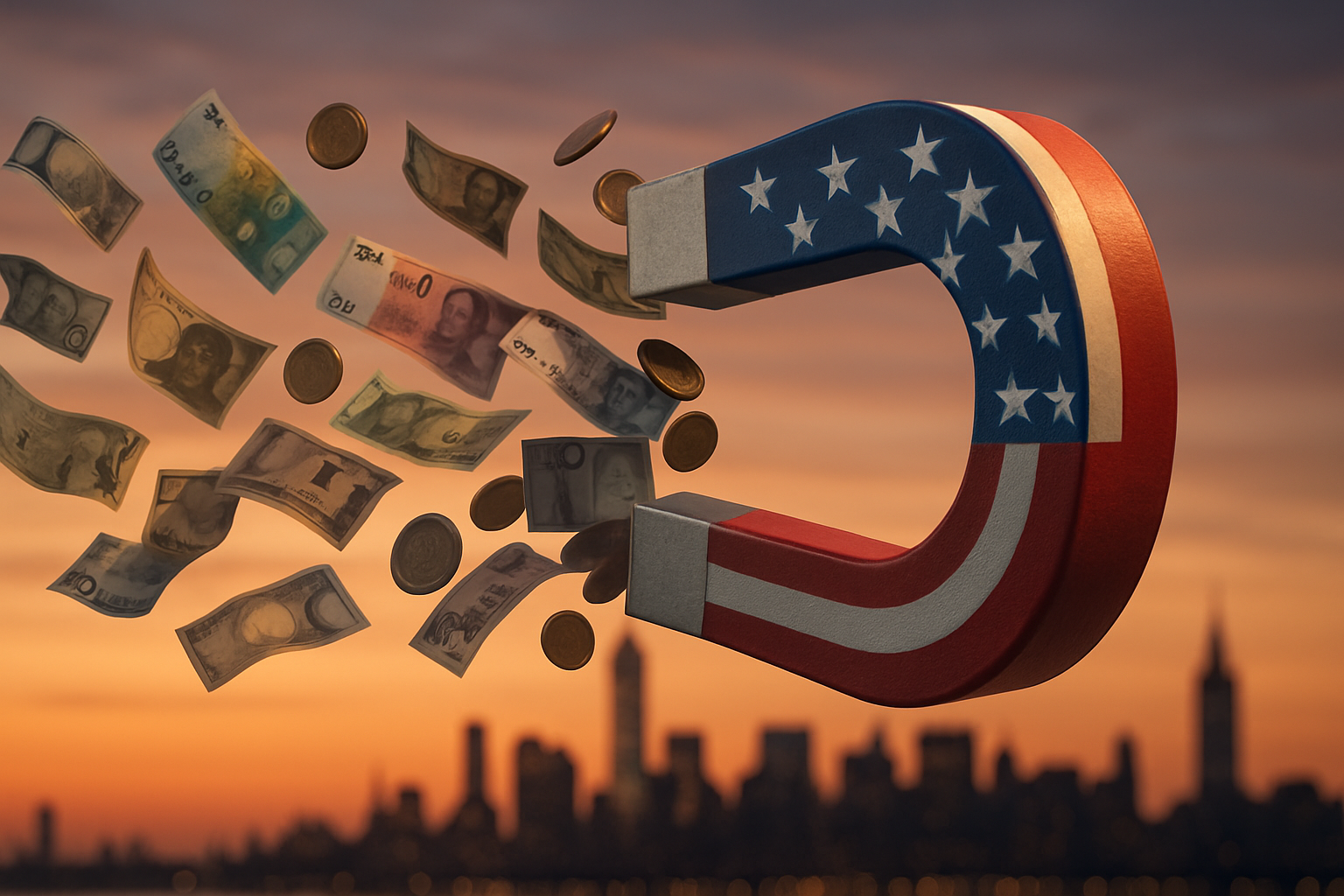Talk about financial magnetism. You ever notice how some people at parties somehow become the center of attention without trying? That's America in the global financial system right now—standing in the corner with nothing but a sparkling water, yet somehow everyone wants to be nearby.
The numbers are staggering. Since 2007, foreign ownership of U.S. financial assets has grown at 7.2% annually, easily outpacing the 4.7% growth of American investments abroad. By early 2025, foreign investors were holding a mind-boggling $55 trillion in U.S. assets—nearly 1.6 times what Americans own overseas.
America has essentially become a financial black hole. And not the kind you can escape from.
What Makes Uncle Sam So Damn Attractive?
I've been tracking capital flows since the early 2010s, and two periods stand out like sore thumbs: the 2008 financial crisis and the 2020 pandemic. Both times, when global markets went haywire, investors collectively decided that if everything was going to hell, they'd rather be clutching dollars when they got there.
The standard explanation is simple—it's a flight to safety. Deep markets, transparent(ish) rules, and a legal system that generally protects property rights. But there's something else happening here.
When financial chaos reigns, capital doesn't just want safety—it craves certainty. And weirdly enough, even during its own meltdowns, America projects a bizarre kind of certainty. It's like that friend who's confidently wrong yet somehow more convincing than your thoughtful, nuanced buddy.
Look, I call this the "asymmetric vulnerability thesis." (Fancy name, I know.) When global stress rises, U.S. markets just seem less vulnerable compared to the alternatives. Not invulnerable—remember, 2008 started right here—but less likely to completely implode.
This creates a feedback loop that would make any systems engineer proud. Capital rushes to America, strengthening our financial institutions, which then appear even safer, attracting more capital. Meanwhile, other markets hemorrhage investment, making them look riskier, which... you guessed it... accelerates the exodus.
The Irony That Nobody Talks About
Here's the thing that makes me chuckle at financial conferences (where, admittedly, humor is in short supply): the U.S. economy is riddled with problems! Massive national debt, political dysfunction that would make a reality TV producer blush, infrastructure that's seen better days—yet global capital collectively shrugs and mutters, "Yeah, but have you seen the alternatives?"
I spoke with several sovereign wealth fund managers last month who basically confirmed this sentiment. One literally told me, "America's problems are transparent. Elsewhere, we don't even know what we don't know." Can't argue with that logic.
What This Means For Your Portfolio
For investors watching stocks like NVDA, AIFU, AMD, OKLO, TSLA, and PLTR, there's an interesting pattern. These aren't random companies benefiting from America's magnetic pull—they're part of what creates it.
NVIDIA and AMD? They're riding the semiconductor wave that's fundamental to technological dominance. Tesla represents America's knack for disruptive innovation (love or hate Musk). Palantir sits at that weird, uniquely American intersection of technology and national security. OKLO is pushing next-gen nuclear, while AIFU captures the AI frontier.
These companies aren't just sitting back and collecting foreign capital—they're actively part of why that capital comes here in the first place. They represent what global money is hunting for: innovation, growth potential, and that peculiar American talent for creative destruction that somehow (usually) creates more than it destroys.
The Questions Nobody Wants to Answer
But—and there's always a but—this raises some uncomfortable questions. Is America's position sustainable? What happens if that $55 trillion in foreign-owned assets suddenly decides it wants to go elsewhere? And perhaps most importantly, does this massive capital inflow actually help regular Americans, or just inflate asset bubbles that benefit people who already have beach houses?
I don't have neat answers. The machinery that turns foreign capital into broadly shared prosperity is complicated and, frankly, rusty. Having covered wealth inequality since 2015, I can tell you the transmission mechanism is broken in several places.
But understanding America's gravitational pull matters for anyone navigating today's markets—whether you're managing billions or just trying to figure out your 401(k) allocation.
Because in a world where capital increasingly flows toward one center of gravity, the fundamental question isn't just where your money is invested, but how exposed you are to either the continuation—or the potential disruption—of this weird American financial exceptionalism.
And that's something worth pondering while you're watching NVIDIA's next earnings call. Or, you know, wondering how to pay your ever-increasing rent.
